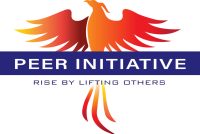Suicide is a serious public health problem that can have lasting harmful effects on individuals, families, and communities. Suicide was the 12th leading cause of death in Louisiana in 2021. There are many factors that contribute to suicide. The goal of suicide prevention is to reduce risk factors of suicide and to increase and promote resilience.
The Bureau of Family Health’s Violence and Injury Prevention program works to implement and evaluate a comprehensive public health approach to suicide prevention. These efforts are supported by CDC’s Comprehensive Suicide Prevention Grant. A key goal of this program is a 10% reduction in suicide and suicide attempts among populations that are disproportionately affected by suicide, including youth and veterans.
Core Functions & Goals
- Utilize data to understand contributors and track trends related to suicide
- Identify and assess gaps in existing programs
- Implement and evaluate evidence-based strategies within the CDC’s Suicide Prevention Resources for Action
- Provide reports, fact sheets, talking points, and other data communication products to share findings and recommend evidence-based prevention methods
- Grow and sustain partnerships across multi-sectors focusing on suicide prevention and improving mental health
- Coordinate injury prevention activities with key partners at community and statewide levels
Syndromic Surveillance
Syndromic surveillance provides public health officials with a timely system for detecting, understanding, and monitoring health events. Syndromic surveillance is the near real-time collection and analysis of pre-diagnostic and disease indicators such as symptoms using electronic data (HL7) mainly from Emergency Departments (ED). The purpose is to rapidly detect clusters of symptoms and health complaints that might indicate a disease outbreak or other public health threat in order to mobilize a rapid response. Syndromic data can serve as an early warning system for public health concerns such as flu outbreaks, and have been used in responses for opioid overdoses, e-cigarette or vaping product use-associated lung injury, Zika virus infection, natural disasters, and more recently for suicidal ideation and attempts.
Syndromic surveillance is the near real-time collection and analysis of pre-diagnostic and disease indicators such as symptoms using electronic data (HL7) mainly from Emergency Departments (ED).
Data Resources
Dashboards
This dashboard shows data for suicide ideation and suicide attempts.
Toolkits
If you can’t find what you need here, please complete an online data request form. Someone from our Data Action Team will reach out to you to discuss your request in order to best meet your needs. Researchers requesting data sets will also need to complete a data use application. Appropriate forms will be provided once a member of our team reviews your request.
SCAN

The Suicide Community Alert Network (SCAN) tracker is an email-based alert system for suicide activity at the parish and/or Office of Public Health region level for youth ages 10 – 19. The SCAN tracker monitors upticks in suicide-related Emergency Room visits on a weekly basis. If there is a significant increase for youth age 10-19, an email is sent to suicide prevention partners in that parish that have signed up for alerts. These alerts are meant to help partners be more aware of recent non-fatal suicide-related activity in their area, allowing them to mobilize faster and tailor their support for the people who need it most.
If you are interested in learning more about SCAN, please contact Victoria.Smith2@la.gov
Prevention Partners
Agencies below are some of the Comprehensive Suicide Prevention program partners. Over 30 multi-sector organizations participate in a Statewide Suicide Prevention Collaborative which meets annually in-person and virtually to network and align suicide prevention efforts. If you are interested in learning more or joining the Collaborative, please email Kristen.sanderson@la.gov.
Helpful Links
Helpful links for suicide prevention resources.







